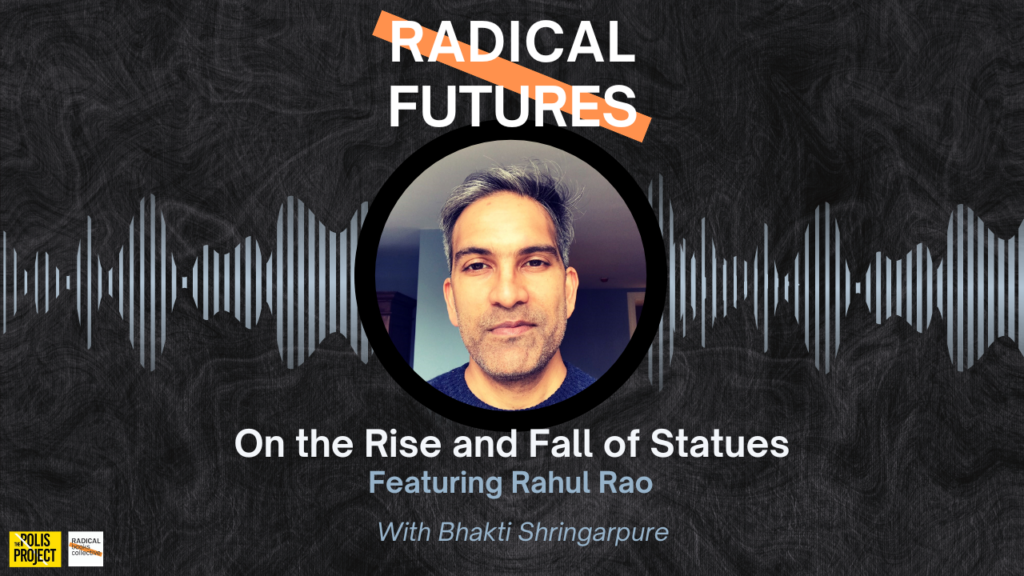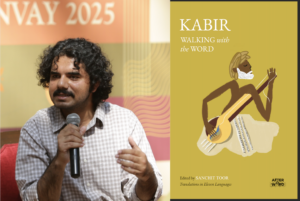
The Rise and Fall of Statues: Featuring Rahul Roy

Whether its legacy figures like Cecil Rhodes, Mahatma Gandhi and B.R Ambedkar, or various military men or aggressive phallic sculptures, statues are the public’s direct and unavoidable encounter with institutionally constructed histories. They represent the supremacy of colonialism, race, caste and gender, and so movements centered on either dismantling or building them have become critical for understanding charged debates around history and memory today. Rahul Rao’s book The Psychic Lives of Statues: Reckoning with the Rubble of Empire explores these global controversies, and offers radical insights into how the past, present and future is made and re-made through statues and monuments in the public spheres.
Rahul’s inquiry began with a simple question: “How can an apparently inanimate object like a statue arouse so much fervor, and affect those attacking it and those seeking to preserve it?” These questions about arousal and attachment led to the realization that like large advertisement billboards, statues are non-consensual: “They enter our sight lines without permission, right?” They wield power because of their assaulting presence. Rahul found himself turning to the language of psychoanalysis to understand our collective relationship to statues and to move past the “ordinary observation that statues are phallic objects. He found that statues are a “a peculiar combination of aggression and vulnerability,” and this is precisely why their exposure in the public sphere “makes them vulnerable to attack and to re-inscription.”
These questions prompted a journey through places where statues and monuments have elicited a frenzy: South Africa, Ghana, US, UK and India where protesters were dismantling statues, as powerful political institutions were erecting new ones. These overlapping and opposing actions were occurring at a dizzying speed, as movements like RhodesMust Fall, Black Lives Matter as well the Covid-19 pandemic were unmasking systemic inequality worldwide.
India, for Rahul, is at the heart of this book with two of the middle chapters dedicated to exploring statues of figures of Gandhi, Ambedkar, Vallabhbhai Patel who are in a volatile constellation of moving and shifting, resurrected and felled within the Indian polity. The popular Indian culture of “darshan”—the act of making eye contact with god (rather, the idol of a god) —is a significant moment of worship and, in fact, manifests itself in the building of statues not just of gods but also of revered figures. They become ways to both claim space, and of“asserting identity, asserting pride in a particular community, in its history, in its mythology, in its icons.” From the 1960s onwards, the Dalit movement was successful in building statues of Ambedkar all over India and this was “probably the most viral statue building phenomenon anywhere in the world.”
However, Rahul zooms in on the last 10 years, as the Hindu right-wing attempts to respond to history and memory-making through their own rush to build statues. He travels around Gujarat in the hope of understanding the ways in which the legacies of Vallabhai Patel and Gandhi are being valorized and desecrated, respectively. In an attempt to build tourist infrastructure for the museumization of figures like Patel, indigenous people are forcibly displaced from their land. Thus, within this “heartland of Hindu right politics” Rahul encounters a dystopic new India where dynamics of settler colonialism are “unfolding in the postcolonial state.”
The book, as well as our conversation, returns to decolonization, and ways in which the concept has been co-opted and corrupted by right-wing movements. Even as the world looks bleak and the situation in Palestine only worsens, Rahul urges new ways of reading and re-engaging with old school thinkers like Frantz Fanon, Ngugi wa Thiong’o and Ambedkar. “We need to relate to these figures less like trophies or canon. We need to engage in less of the sacral reading and in a more comradely reading.”





